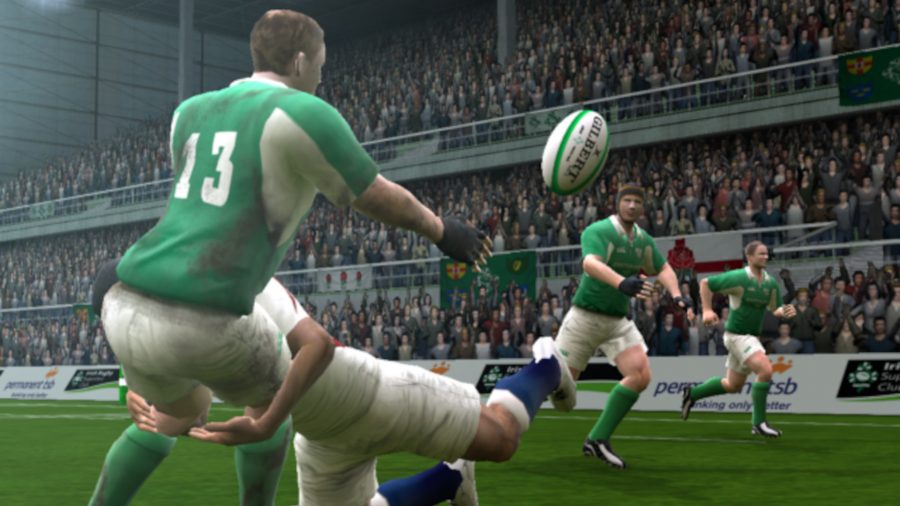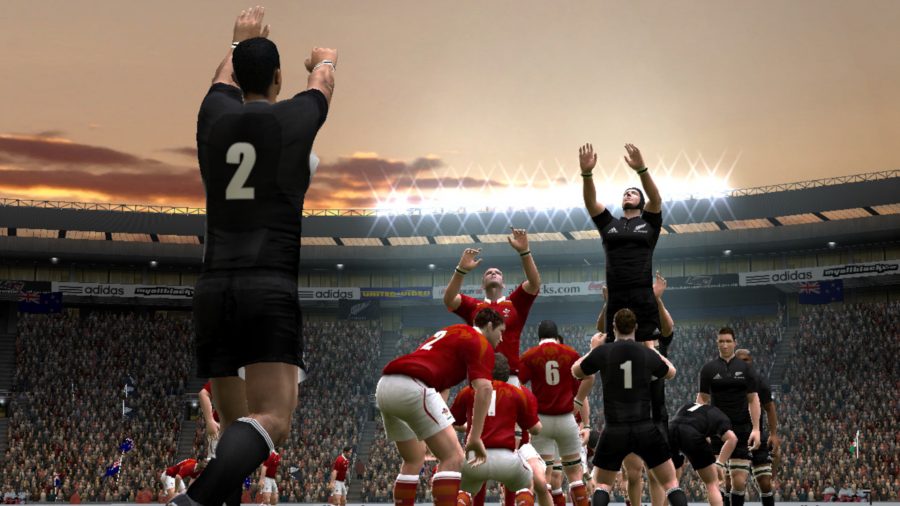It’s been 13 long years since Electronic Arts last released a rugby game. Since then, games like Rugby Challenge 4, Rugby 20, and Rugby World Cup 2015, have all come and gone, but none of them have really hit the mark in quite the same way. Maybe it’s the fact that these new games are missing licences, have players that defy the laws of physics, and referees that seem intent on ruining a good game, or maybe it’s the fact that they just pale in comparison to the golden age of EA Sports games.
Sure, Jonah Lomu Rugby, which released in 1997, was actually produced by Codemasters – a studio EA now owns – but Rugby 2004, 2005, 2006, and 2008, which were all made by EA Sports, are still considered to be superior games when compared to the modern day equivalents made by the likes of Nacon and Eko Software. As for why? Well, the proof is in the pudding.
All four of these games focused on the core tenets of rugby. All the main teams and leagues were featured, the gameplay felt relatively realistic, and the offerings – for their time – were expansive. All of EA’s games featured thousands of players, dozens of leagues, and some of the best commentators to ever pick up the microphone.
The games were also relatively easy to pick up and play too, which is a surprise given the ever-growing complexity of the laws of the game.
While the Rugby series wasn’t without its faults, the games helped EA nail its sporting formula. Rugby 2004 was a relatively straightforward game, but it allowed you to build an all-star team, play with friends in a co-op setting, and play with teams across multiple leagues. Rugby 2005 built on those foundations, with motion-captured animations and on-the-fly play control never seen before in a rugby game.
However, it was in Rugby 2006, where the real breakthrough came. Along with multiple game modes, 06 added multiple tactical plays, allowing you to make key decisions at the breakdown, offload passing, quick penalties, and impact players – the one feature that you’ll still see used in Madden games today.
Other developers have tried to emulate this success in recent years, but they’ve struggled to capture the essence of the game. While some may argue that it’s difficult to program the individual movements of 30 players, I’d argue that recent attempts are actually worse than the originals. Despite 12 years between Rugby 2008 and Rugby 20, the two don’t feel all that dissimilar. The graphics are a bit better, but the movement of the players, the physics, and the in-game features that are meant to enhance the gameplay experience feel dated.
Eko Software’s game launched without the licences for some of the top national teams. And when you did play as a licensed team, the player’s faces were beyond recognisable. The majority of players look like regens from Football Manager games – computer generated players who bear no resemblance to real life people. Rugby 22, Eko’s third attempt, will finally feature the All Blacks and a few other licensed teams – but to make this really work, you need to have the agreement of the Unions.
It’s not just the licences though – it’s the gameplay. Despite technological advancements since the early days of PlayStation and Xbox, rugby games still feel like they’ve been produced with old consoles in mind. Rugby 20 felt sluggish at the best of times and the AI were predictable.
With current-gen technology, I want to feel present on the field with the likes of haptic feedback – I want to feel the weight of the ball as it slides into my hands, I want to feel the speed of Louis Rees-Zammit on the wing, and I want to feel the power of Maro Itoje in defence. Right now, the only thing rugby games offer is sub-par gameplay and questionable referees and I’m not sure that’s going to change with Rugby 22.
It’ll come as no surprise then to hear that fans are still clamouring for a good rugby game. Ugo Monye has spoken about his want for a new game, Jack Nowell is also desperate for one, and Agustin Pichot even added a videogame to his manifesto during his bid to become the chairman of rugby’s governing body, World Rugby.
But why should EA be the ones to keep Monye, Nowell, and countless other rugby fans around the world happy? While the developer has certainly dropped the ball with micro transactions in recent years, its work on making FIFA, Madden, and NHL games the go-to destination for fans of those sports cannot be understated. The company works with the unions to ensure licences are secured, that players and their leagues are represented, and that the game is accessible for all.
These games also boast the best online multiplayer experiences of all sporting games and it’s something I believe rugby fans deserve. Who doesn’t want to create the ultimate rugby team and put them to the test against millions of others worldwide? Who doesn’t want to embarrass their opponent by giving their prop the ball and having him run down the wing to score a try?
We live in a world where online multiplayer is the norm and without a proper battleground to get competitive, I can’t see the next big rugby game making waves.
Striking the balance between the casual and the competitive is important, especially since World Rugby has failed to capitalise on the technological advancements of the modern age. It’s no big secret that rugby has been struggling to captivate new audiences, but with a new rugby game, the possibilities are endless.
Pichot’s bid to become World Rugby chairman might have ended in tears, but he had a point – rugby as a sport is behind the times. And to survive in the modern age things need to change. That change won’t happen until EA – or another dedicated developer – takes over and gives young fans what they want: a decent rugby videogame.



